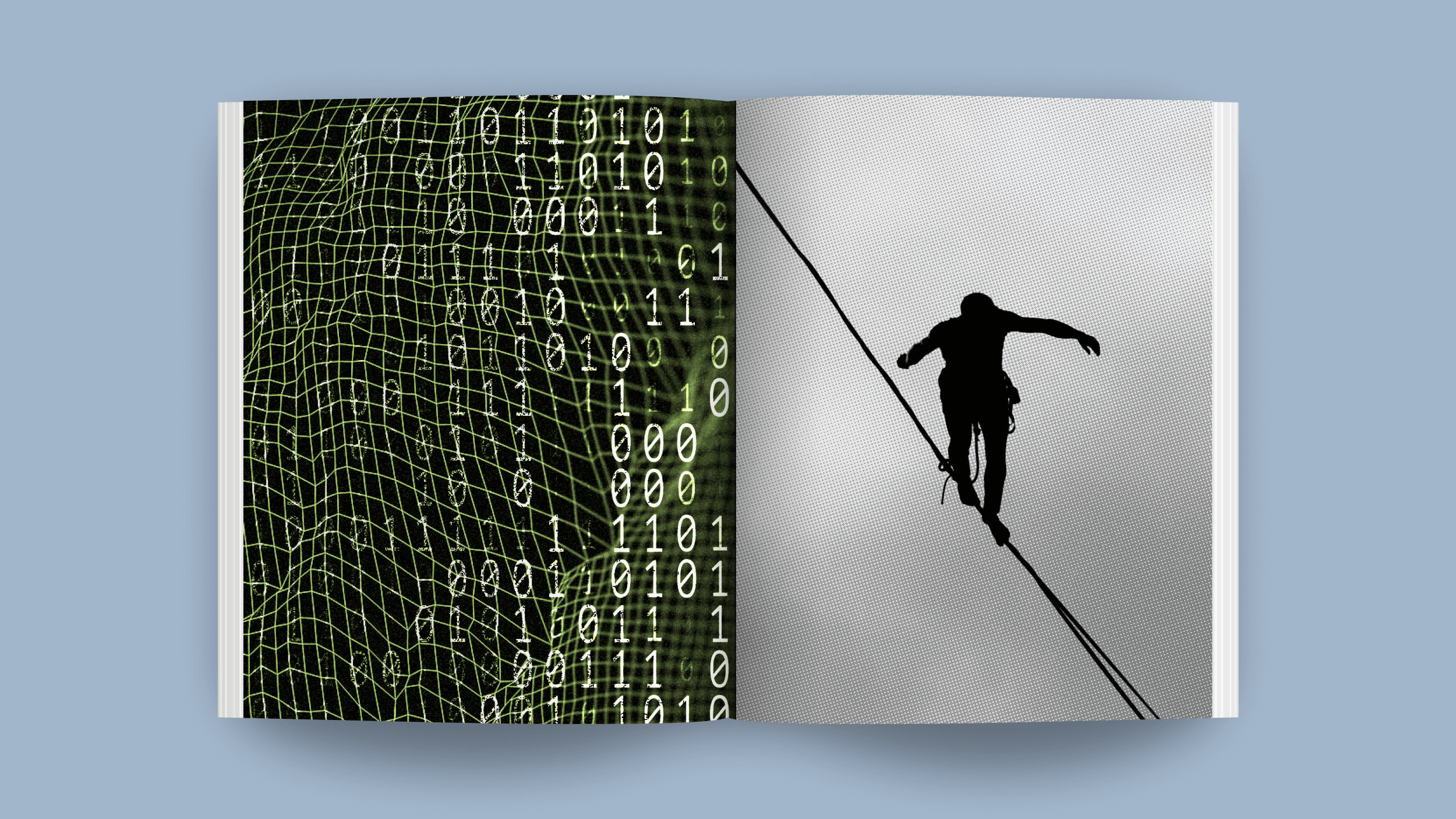Alan Gilbert has been musical director of the New York Philharmonic since September 2009. He was previously chief conductor and musical adviser to the Royal Stockholm Philharmonic Orchestra, and has[…]
Sign up for the Smarter Faster newsletter
A weekly newsletter featuring the biggest ideas from the smartest people
The conductor describes what he was thinking and feeling during his first performance with the New York Philharmonic.
Question: Describe how you were feeling and what you were thinking about during this performance.
rn
Alan Gilbert: Yeah, well this was a special concert for rnme obviously because it was the first one as a music director, and it rnwas live on television, and the way the rehearsal schedule went we rndidn't have that much time to prepare it, so we were not as played into rnthe program as I would ideally want to be. I'm not making excuses. I'mrn just saying that this was the situation. So when I went out on stage Irn was in a way trying to skip a step. I love the experience of playing arn piece over and over on tour because it does improve. It develops, it rnmatures, and we had a wonderful experience doing that in January and rnFebruary. I did a tour with the orchestra. This was several months rnafter the opening, and one of the pieces we played was the Second rnSymphony of Sibelias. I like to keep working, and I like to keep rnrefining and perfecting things, and when we finally came back to New rnYork and played it in Carnegie Hall, it really was possible to give a rnperformance that was based on comfort and experience.
This one wern hadn't played, and I tried in my mind to kind of play a mental trick rnand just pretend that all that development had happened, and sometimes rnthat actually works very well, and with an orchestra like the New York rnPhilharmonic that can really deliver in the moment and be poised, it canrn work.
rn
rnFor me emotionally, I was also trying to stay calm. I don't really get rnnervous for concerts. Some people find that interesting to hear. They rnthink, "Oh, do you get nervous in concerts?" I don't so much get rnnervous, and even in this concert, which was highly scrutinized and rnimportant‚—being the first one and all—I wasn't so nervous, but I was atrn the same time trying to make sure that I was calm, and I wasn't taking rntempos too fast. Sometimes when you're not aware of it, if you're keyedrn up, and if the stakes are high, tempos tend to come out faster. I was rntrying to really just settle down and make as expressive a case for the rnmusic as I can. And the Berlioz is a great piece as far as that goes. rnIt's a great piece by any measure, but it's so colorful, and it has a rnkind of combination, I think. You know, some people have called Berliozrn the kind of "most German" of the French composers, and I find that rnactually interesting and rather telling because he has the kind of rnimpressionistic, pastel, refined quality of sound in his music. And I rnthink you hear that right at the beginning, and that's one of the rnexcerpts that we've just looked at.
It starts out with this rnamazing lightness and delicacy. You can imagine a kind of Monet rnpainting where the colors kind of bleed into each other, and it's very rnveiled and lovely. And then there are moments in the piece where there rnhas to be an incredible precision and a rhythmic drive. There are very rnfew composers who I think really encompass this incredible range of bothrn rhythmic precision with tonal fantasy. As a conductor you try to show rnthe time as clearly as possible, but there are moments in this piece rnwhere it doesn't work simply to be precise. You have to embody the rnevanescence of the sound, the kind of lightness of texture.
It's rnvery interesting how just the simple quality of your body; if you hold rnyour hands like this, or if you relax them, it effects the sound rninstantly. The players read that, and they sympathetically create that rnkind of sound. I find it very difficult. I think all conductors find rnit very difficult to have the right kind of connection and horizontal rnlightness in sound while at the same time determining points along the rnway that are the temp. That's to me the challenge of Berlioz, and rnreally what I was trying to accomplish is to have both sides of his rnmusic.
Recorded on June 18, 2010
Interviewed by David Hirschman
rn
Alan Gilbert: Yeah, well this was a special concert for rnme obviously because it was the first one as a music director, and it rnwas live on television, and the way the rehearsal schedule went we rndidn't have that much time to prepare it, so we were not as played into rnthe program as I would ideally want to be. I'm not making excuses. I'mrn just saying that this was the situation. So when I went out on stage Irn was in a way trying to skip a step. I love the experience of playing arn piece over and over on tour because it does improve. It develops, it rnmatures, and we had a wonderful experience doing that in January and rnFebruary. I did a tour with the orchestra. This was several months rnafter the opening, and one of the pieces we played was the Second rnSymphony of Sibelias. I like to keep working, and I like to keep rnrefining and perfecting things, and when we finally came back to New rnYork and played it in Carnegie Hall, it really was possible to give a rnperformance that was based on comfort and experience.
This one wern hadn't played, and I tried in my mind to kind of play a mental trick rnand just pretend that all that development had happened, and sometimes rnthat actually works very well, and with an orchestra like the New York rnPhilharmonic that can really deliver in the moment and be poised, it canrn work.
rn
rnFor me emotionally, I was also trying to stay calm. I don't really get rnnervous for concerts. Some people find that interesting to hear. They rnthink, "Oh, do you get nervous in concerts?" I don't so much get rnnervous, and even in this concert, which was highly scrutinized and rnimportant‚—being the first one and all—I wasn't so nervous, but I was atrn the same time trying to make sure that I was calm, and I wasn't taking rntempos too fast. Sometimes when you're not aware of it, if you're keyedrn up, and if the stakes are high, tempos tend to come out faster. I was rntrying to really just settle down and make as expressive a case for the rnmusic as I can. And the Berlioz is a great piece as far as that goes. rnIt's a great piece by any measure, but it's so colorful, and it has a rnkind of combination, I think. You know, some people have called Berliozrn the kind of "most German" of the French composers, and I find that rnactually interesting and rather telling because he has the kind of rnimpressionistic, pastel, refined quality of sound in his music. And I rnthink you hear that right at the beginning, and that's one of the rnexcerpts that we've just looked at.
It starts out with this rnamazing lightness and delicacy. You can imagine a kind of Monet rnpainting where the colors kind of bleed into each other, and it's very rnveiled and lovely. And then there are moments in the piece where there rnhas to be an incredible precision and a rhythmic drive. There are very rnfew composers who I think really encompass this incredible range of bothrn rhythmic precision with tonal fantasy. As a conductor you try to show rnthe time as clearly as possible, but there are moments in this piece rnwhere it doesn't work simply to be precise. You have to embody the rnevanescence of the sound, the kind of lightness of texture.
It's rnvery interesting how just the simple quality of your body; if you hold rnyour hands like this, or if you relax them, it effects the sound rninstantly. The players read that, and they sympathetically create that rnkind of sound. I find it very difficult. I think all conductors find rnit very difficult to have the right kind of connection and horizontal rnlightness in sound while at the same time determining points along the rnway that are the temp. That's to me the challenge of Berlioz, and rnreally what I was trying to accomplish is to have both sides of his rnmusic.
Recorded on June 18, 2010
Interviewed by David Hirschman
▸
5 min
—
with





